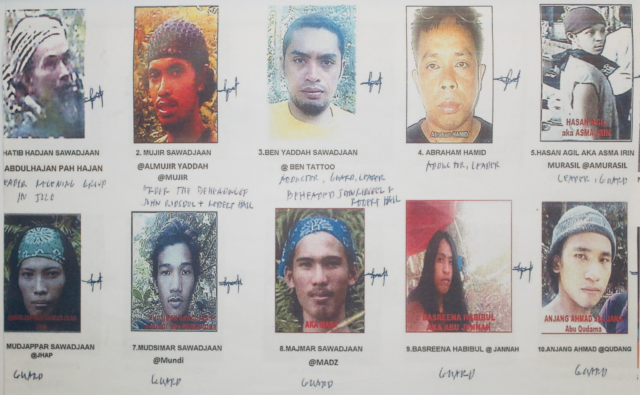
Brief: Abu Sayyaf Moves Closer to Demise with Shortage of Recruits
Publication: Terrorism Monitor Volume: 21 Issue: 14
By:

On June 7, Philippine security forces on Basilan Island (off of Mindanao) claimed to have “rescued” an Indonesian boy who was being trained to carry out bombings (philstar.com, June 7). The boy was in a hideout of two Islamic State (IS)-loyal sub-commanders, Mudzrimar Sawadjaan (alias Mundi) and Pasil Bayali (alias Kera). He was also the son of Rullie Rian Zeke (alias Abbang Rullie), who conducted a suicide bombing at Jolo Cathedral in January 2019 that killed 23 people and wounded more than 100 others.
Rullie Rian Zeke’s daughter, Siti Aisyah Rullie (alias Maryam Israni), had also been recruited and raised in Abu Sayyaf’s ranks, but was found by the Philippine security forces in Sulu in January 2021 (arabnews.com, June 25, 2021). By the time that they found Siti, they learned that Rullie and his wife, Ulfah Handayani Saleh, had been members of Jamaah Ansharut Daulah (JAD) in Indonesia before traveling to the Philippines to join Abu Sayyaf. Siti, meanwhile, had been married to another Abu Sayyaf member, Rudymar Habib Jihiiran (alias Gulam), who indoctrinated and trained her to become a suicide bomber.
The security forces also learned when Siti was arrested that her brother had been taken to another camp to be trained to conduct his own suicide bombing. Their other sister, Rezky Fantasya Rullie (alias Cici), was already in prison at that time for planning a suicide attack to avenge the death of her husband, Andi Baso; Baso was killed in battle with the Philippine security forces in Sulu in 2020. He had been a militant recruiter in Indonesia and Malaysia before becoming a combatant in the Philippines (inquirer.net, October 12, 2020).
Moreover, in the same operation that led to Baso’s death, another Abu Sayyaf bomb-maker, Samir Nani, was killed. Intelligence obtained from the operation also led the security forces to track down another bomb-maker, Arsibar Sawadjaan, who was a nephew of Abu Sayyaf commander Hatib Hajan Sawadjaan. Arsibar Sawadjaan was killed in September 2020, several weeks after Baso and Nani (manilastandard.net, September 29, 2020).
The incestuous nature of the Rullie and Sawadjaan families’ involvement in Abu Sayyaf reflects how the group is likely no longer able to recruit en masse across wide swathes of southern Mindanao. Rather, the group depends on families to contribute their children to the cause, especially after the parents themselves are killed in battle or conduct suicide bombings. The recruitment of children and the marrying off of daughters to commanders suggests that the group, therefore, does not enjoy the broader appeal that it once had. Moreover, once the main contributing families to Abu Sayyaf—such as the Rullies and Sawadjaans—are disrupted from carrying out more attacks or see most of their members detained or deceased, Abu Sayyaf operations will experience drawdowns.
More broadly, as early as the start of this year, Marine Brigadier General Arturo Rojas, who had led the Western Mindanao Command (WESMINCO), stated that Mudzrimar Sawadjaan’s fighters now travel in small groups because of their “dwindling numbers” (mindanews.com, January 1). Moreover, two areas that had once hosted Abu Sayyaf bases, according to Rojas, including Zamboanga Peninsula and Tawi-Tawi, had by 2023 become “Abu Sayyaf-free.” The latest WESMINCOM statements and disruption of key contributing Abu Sayyaf families further substantiates the trend that Abu Sayyaf is closer to its demise than potential resurgence.



